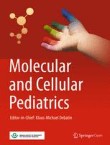Are microRNAs suitable biomarkers of immunity to tuberculosis?
MicroRNAs (miRNAs) are crucial regulators of human immunity e.g. against Mycobacterium tuberculosis. Against the background of still alarming high mortality of tuberculosis effective biomarkers to improve diagnos...
